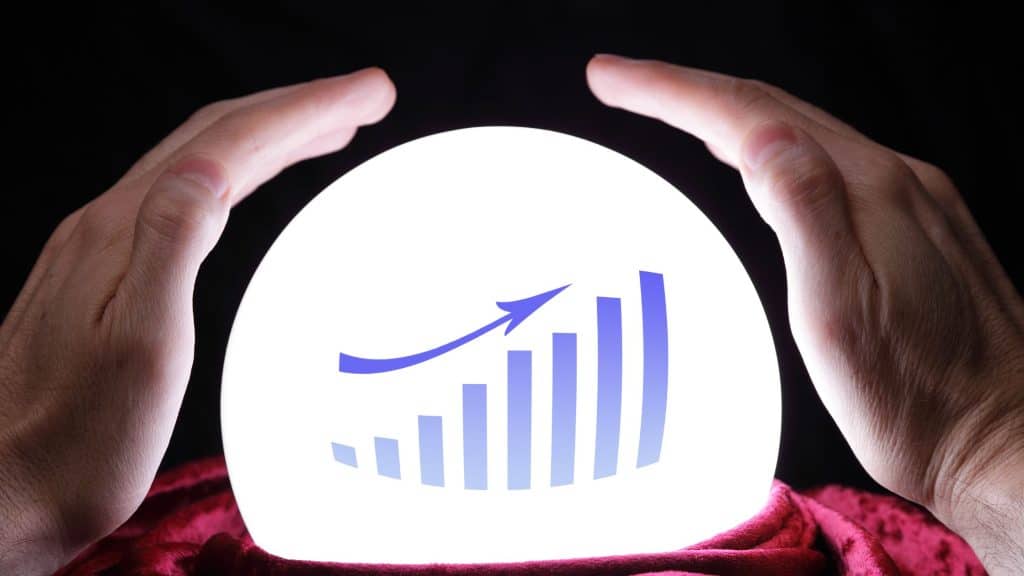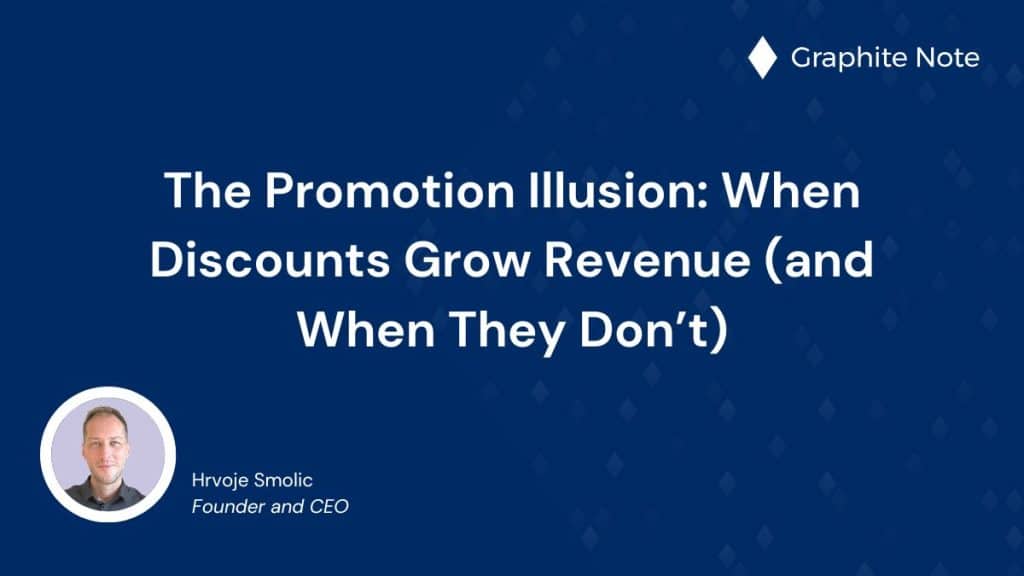We explore the key steps and components involved in creating a predictive analytics forecasting model. A predictive analytics forecasting model is useful for your business.
Understanding Predictive Analytics
Let’s start by understanding what predictive analytics is all about. Predictive analytics is the practice of using historical data and statistical algorithms. Predictive analytics models make predictions about future outcomes. Businesses make informed decisions and improve their overall performance.
Predictive analytics techniques are a powerful tool. Predictive analytics techniques enable businesses to use their data to gain a competitive edge. This makes predictive analytics important for businesses. How do predictive analytics tools and the predictive analytics process actually work?
The Basics of Predictive Analytics
Predictive analytics tools involve three fundamental steps: data collection, data analysis, and prediction. Predictive analytics models rely on these steps being performed well. These steps affect the model’s predictive analytics capabilities, results, and performance. The three steps are:
- Data collection: Data collection is the process of gathering relevant data from various sources. Big data sources can include sales records, customer behavior, or market trends. It is important to use a wide range of data sets, as these data sets affect the results. Training data must be reliable for machine learning models to benefit from it. Predictive analytics capabilities are highly dependent on the data collection phase.
- Data analysis: During data analysis, data is cleaned and preprocessed. Data mining techniques play an important role in preparing the data for analysis. Data mining helps clean, organize, and transform the data into a usable format for the machine learning models. Data analysis is where the big data is analyzed. The data is analyzed using statistical techniques and machine learning algorithms. to identify patterns and relationships. Statistical techniques are then applied to uncover patterns and relationships in the data. Statistical techniques include regression analysis, time series analysis, or other predictive modeling techniques. Regression analysis is a statistical technique used to understand the relationships between variables. It’s useful for uncovering how one variable affects another variable. Time series analysis is a method for analyzing data that changes over time. Machine learning algorithms, such as decision trees or neural networks, are also used to build predictive models.
- Prediction: The predictive model is built and used to generate forecasts and make predictions. The predictive model is then tested and validated using historical data. This ensures that the model and statistical modeling approach is reliable. The model can be trusted to make accurate predictions. The statistical modeling technique can generate forecasts. The machine learning model can make predictions about future outcomes.
Predictive analytics is an iterative process. As new data becomes available, predictive analytics solutions can be updated and refined. This improves its accuracy and effectiveness.
The Role of Predictive Analytics in Business
Predictive analytics and data analytics are important for business success. With predictive modeling and advanced analytics, businesses can anticipate customer behavior. Businesses can optimize inventory management, detect fraudulent activities, and even forecast market trends. Let’s outline some predictive analytics examples and predictive analytics use cases.
One of the key applications of predictive analytics is in customer relationship management. By analyzing customer data, businesses can identify patterns and trends. These can help them better understand their customers’ needs and preferences. These advanced analytics help them to personalize their marketing campaigns. Businesses can also improve customer satisfaction, and increase sales.
Predictive analytics is also invaluable in supply chain management. By analyzing historical data and market trends, businesses can optimize their inventory levels. The analysis of their business analytics helps them ensure that they have the right products in stock at the right time. This helps reduce costs, minimize stockouts, and improve overall operational efficiency.
There are many other predictive analytics use cases. Predictive analytics can help to detect and prevent fraudulent activities. By analyzing patterns and anomalies in transaction data, businesses can identify potential fraudsters. Businesses can take proactive measures to mitigate risks.
Predictive analytics solutions enable businesses to forecast market trends. Businesses can then make informed decisions about product development, pricing strategies, and market expansion.
Predictive analytics is also highly useful in the healthcare industry. Electronic health records (EHRs) and other digital tools generate massive amounts of patient data. This big data holds immense potential for improving healthcare delivery. Predictive models can identify patients at high risk for complications. This enables healthcare professionals to tailor treatment plans and interventions. Hospitals and healthcare industry organizations can use predictive analytics to optimize resource allocation. Healthcare professionals can enhance patient care. Healthcare practitioners can predict patient readmission rates, and improve patient outcomes.
Predictive analytics can also help with weather forecasting. Time series models are used to analyze weather patterns and improve the accuracy of long-term forecasts.Predictive analytics is a powerful tool that empowers organizations to make data-driven decisions. Predictive analytics helps you minimize risks too.
Steps in Building a Predictive Analytics Model
Let’s explore the step-by-step process of building a predictive analytics model.
Define the Problem
A well-defined problem statement will guide your entire analysis. Defining the problem involves understanding the business context and identifying the key objectives. This requires collaboration to gather insights and align on the desired outcomes. This step sets the foundation for the entire project. This ensures that the predictive model addresses the specific needs of the organization. Consider your available resources, time constraints, and potential limitations. This helps to set realistic expectations and determine the scope of the project.
Collecting and Preparing the Data
The success of any predictive model relies heavily on the quality of the data used. Collecting data involves identifying the relevant data sources. These sources contain the necessary information for the analysis. This can include internal databases, external data providers, or even scraping data from websites. The data collection process requires careful consideration of data privacy and compliance regulations. Once the data is gathered, it needs to be cleaned, transformed, and prepared for analysis. This involves removing duplicates, dealing with missing values, and ensuring data integrity. Data cleaning techniques such as outlier detection and handling categorical variables are applied. These enhance the quality of the dataset. Preparing the data also involves feature engineering. Feature engineering is the process of creating new variables or transforming existing ones. Feature engineering improves the model’s predictive power. This can include aggregating data, creating interaction terms, or applying mathematical transformations.
Exploratory Data Analysis
Exploratory data analysis (EDA) involves visualizing and summarizing the data. EDA helps to uncover patterns, relationships, and potential insights. During EDA, various statistical techniques and visualization tools are used to analyze the data. This can include calculating summary statistics, creating histograms, scatter plots, or correlation matrices. EDA helps in identifying outliers, understanding variable distributions, and detecting potential data issues. Exploratory data analysis also involves conducting hypothesis testing. Hypothesis testing validates assumptions and uncover significant relationships between variables. This step provides valuable insights that guide the selection and fine-tuning of the predictive model.
Choosing the Right Model
Choosing the right predictive model is a critical step in the process. Depending on the nature of the problem and the type of data available, various models can be considered. Model selection involves a careful evaluation of different algorithms and techniques. This can include traditional statistical techniques. These include regression models, linear regression, logistics regression. These also include more advanced machine learning algorithms like decision trees, random forests, or neural networks. The choice of model depends on interpretability, complexity, and the ability to handle the specific data characteristics. Consider the trade-offs between model performance and computational resources required. Some models may offer higher accuracy but at the cost of increased computational complexity.
Training and Testing the Model
Once the model is selected, it needs to be trained and tested using the prepared data. During the training phase, the model learns from the historical data. The model learns to identify patterns and relationships. The training process involves splitting the data into a training set and a validation set. The model is trained on the training set, and its performance is evaluated on the validation set. This iterative process enables fine-tuning and optimization of the model. Fine-tuning includes adjusting hyperparameters, such as learning rates or regularization parameters. After the model is trained and optimized, it needs to be tested using a separate set of test data to ensure its accuracy and reliability. The test data should be representative of real-world scenarios and should not have been used during the training phase. This step helps in assessing the model’s generalization ability and its performance on unseen data. Model testing involves evaluating various performance metrics. These include accuracy, precision, recall, or area under the curve (AUC). These metrics provide insights into the model’s predictive power and its ability to make accurate predictions. It is important to note that model training and testing are not a one-time process. As new data becomes available, the model needs to be retrained and tested to ensure its performance remains optimal.
Key Components of a Forecasting Model
Forecasting models are used in various industries to predict future trends and outcomes. These models use a combination of statistical techniques, mathematical algorithms, and historical data to make accurate predictions.
There are different types of machine learning models used for classification, including decision trees, neural networks, and support vector machines. Each has its strengths and weaknesses, and data scientists use their expertise to choose the best model for the specific problem.
Time Series Analysis
A time series model is a powerful technique commonly used in forecasting models. A time series model involves analyzing data points collected at regular intervals over time to identify trends, seasonality, and patterns. Time series models help us understand how variables change over time and how they are influenced by external factors. Time series models analyze time series data. Time series data is information collected at regular intervals. By identifying patterns in past data, time series models can forecast future outcomes. A hospital might use a time series model to predict influenza outbreaks and proactively allocate resources. By examining historical patterns, we can make accurate predictions about future behavior. In financial forecasting, time series models can be used to predict stock prices based on historical stock market data. By identifying patterns in stock price movements, investors can make informed decisions.
Regression Models
Regression models are used in predictive analytics to establish relationships between dependent and independent variables. These models help estimate the impact of various factors on the predicted outcome. By analyzing historical data and identifying patterns, regression models can provide valuable insights into how different variables affect the outcome of interest. Linear regression is a statistical technique used to model the relationship between a dependent variable and one or more independent variables. Logistic regression is a workhorse in machine learning, specifically designed for classification tasks. These classification models classify data points into predefined categories.
For example, a model might analyze patient data to predict the risk of developing chronic diseases like diabetes. This allows healthcare providers to intervene early and prevent complications. Logistic regression deals with categorical outcomes, where there are only two possibilities (binary classification). By analyzing historical sales data and incorporating these variables into the model, businesses can make informed decisions about pricing strategies, marketing campaigns, and target customer segments.
Machine Learning Techniques
Machine learning techniques bring predictive analytics to the next level. These algorithms can automatically learn from data, without being explicitly programmed. Machine learning models uncover complex patterns and associations. Machine learning algorithms can handle large and diverse datasets. This makes them ideal for forecasting models that require analyzing vast amounts of data.
From clustering algorithms to neural networks, machine learning opens up exciting possibilities for accurate and dynamic predictions. In demand forecasting, machine learning algorithms can analyze historical sales data, market trends, and external factors to predict future demand patterns. Businesses can optimize inventory management, production planning, and supply chain operations.
Machine learning techniques can also be used in financial forecasting to predict stock market movements, credit risk assessment, and fraud detection. These algorithms can analyze large volumes of financial data, identify patterns, and make predictions with high accuracy, aiding investors, financial institutions, and regulatory bodies in making informed decisions.
Forecasting models are essential tools for predicting future trends and outcomes. By incorporating time series analysis, regression models, and machine learning techniques, these models can provide valuable insights and accurate predictions. Whether it is sales forecasting, financial forecasting, or demand forecasting, understanding the key components of a forecasting model is crucial for making informed decisions and achieving business success.
Evaluating the Performance of Your Model
Finally, it’s crucial to assess the performance of your predictive analytics model.
Understanding Model Accuracy
Model accuracy is a key measure of how well your predictive model is performing. It determines how closely the predicted outcomes align with the actual values. Various metrics, such as mean absolute error (MAE) or root-mean-square error (RMSE), can be used to evaluate model accuracy. Continuously monitoring and evaluating model performance is essential for refining and optimizing your predictions.
Techniques for Model Evaluation
Model evaluation goes beyond accuracy metrics. Techniques like cross-validation, which involves dividing the data into multiple subsets for training and testing, can provide a more comprehensive understanding of your model’s performance. Additionally, visualizations and interactive dashboards can help stakeholders gain intuitive insights from the predictions.
As you embark on your journey of building predictive analytics forecasting models, consider leveraging the power of tools like Graphite Note. Graphite Note is a no-code predictive and prescriptive analytics tool that simplifies the entire process. With its user-friendly interface and powerful algorithms, Graphite Note empowers users to effortlessly build and deploy predictive models, making data-driven decision-making accessible to everyone.
Remember, creating an effective predictive analytics forecasting model involves a combination of technical expertise, quality data, and the right tools. By transforming your business into a data-driven powerhouse, you can unlock new opportunities, enhance operational efficiency, and stay ahead of the curve in today’s ever-evolving business landscape.




